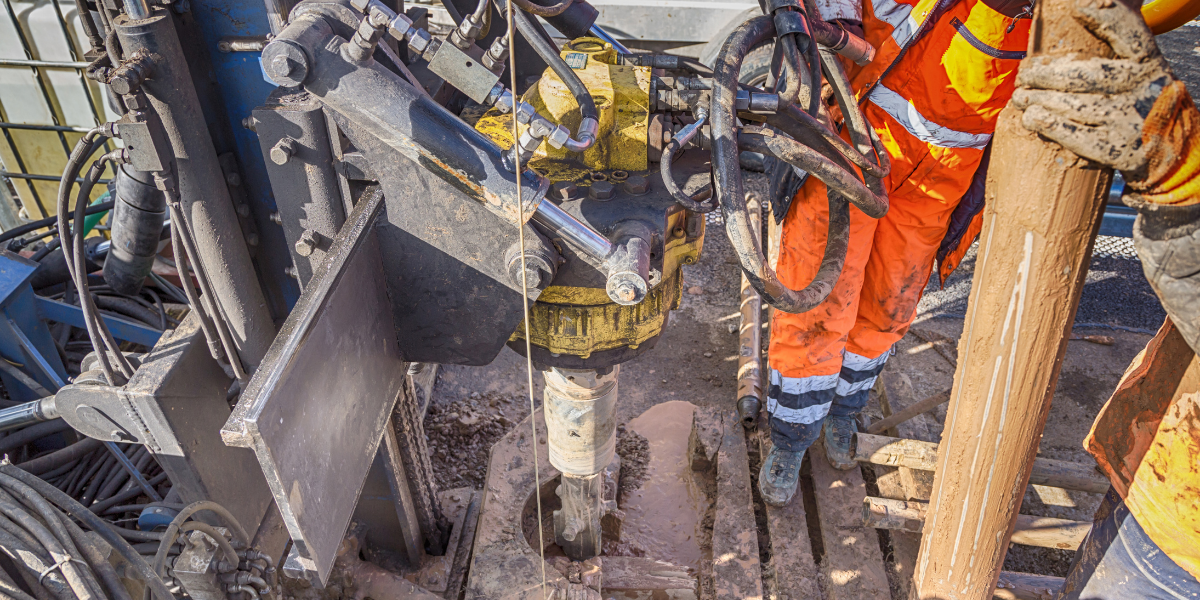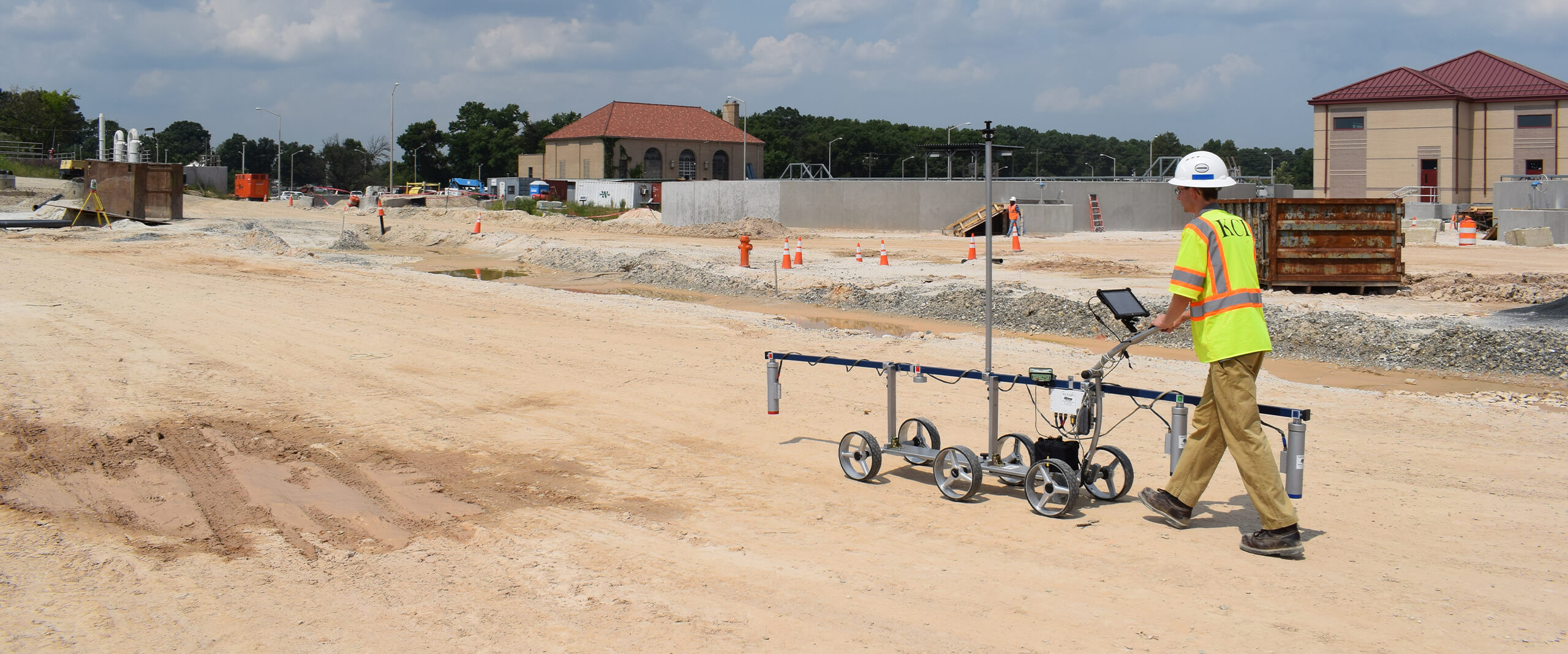Trends Influencing the Future of Geotechnical Eng Practices
Wiki Article
An In-depth Review of the Secret Obligations of Geotechnical Designers in Site Characterization and Ground Renovation Methods for Design Solutions
Geotechnical engineers are integral to the successful execution of design tasks, tasked with the vital obligations of site characterization and the application of ground enhancement strategies. Their work involves a comprehensive analysis of subsurface conditions, using numerous screening methods to identify dirt and rock residential or commercial properties. This fundamental expertise not just educates layout decisions however additionally minimizes prospective dangers linked with ground instability. As we check out the diverse roles of these professionals, it becomes noticeable just how their know-how forms the safety and security and effectiveness of engineering solutions. What certain methods and evaluations stand apart in this vital technique?Duty of Geotechnical Engineers
Geotechnical engineers play a crucial function in the layout and construction of infrastructure by assessing the habits of soil and rock under the surface area - geotechnical industry. Their responsibilities incorporate reviewing subsurface conditions to notify design choices that make sure structural security and safety. By performing in-depth analyses of dirt residential properties, including shear strength, leaks in the structure, and compressibility, geotechnical engineers supply crucial information that influences the selection of proper building products and methodsIn enhancement to assessing soil mechanics, geotechnical designers are entrusted with identifying potential dangers such as landslides, sinkholes, and ground settlements. Their competence assists minimize risks related to these geotechnical phenomena, thus protecting both the environment and public security. They likewise work together very closely with various other design techniques, guaranteeing that geotechnical factors to consider are incorporated right into total job design.
Additionally, geotechnical designers involve in the evaluation of existing structures, offering suggestions for retrofitting and repair services when necessary. Their thorough understanding of soil-structure communication is crucial for the growth of lasting framework services. Generally, the duty of geotechnical designers is integral to the effective awareness of building and construction tasks, guaranteeing they are risk-free, sturdy, and certified with governing requirements.

Website Characterization Procedures
Efficient site characterization procedures are vital for comprehending the subsurface problems that affect job layout and execution. Geotechnical engineers use a methodical strategy to collect, evaluate, and analyze information pertaining to dirt, rock, and groundwater qualities. This procedure starts with a thorough evaluation of existing literature and historical site information, giving insights right into previous site conditions and prospective challenges.
Information evaluation follows fieldwork, where designers utilize geostatistical approaches to analyze findings and develop geological models. This modeling help in identifying potential geohazards, such as landslides or liquefaction, which are crucial for threat assessment. Consequently, the results educate style recommendations, ensuring that engineering options are both risk-free and efficient. Via thorough site characterization, geotechnical engineers lay the groundwork for effective project implementation, minimizing unpredicted issues and optimizing resource allotment.
Dirt and Rock Testing Methods
While understanding subsurface conditions is critical, the selection of ideal soil and rock testing techniques is equally crucial for accurate analysis and style. Geotechnical engineers use a range of testing methods to evaluate the mechanical and physical residential properties of dirt and rock products.Laboratory tests, such as Atterberg restrictions, grain dimension evaluation, and unconfined compressive stamina tests, offer vital data on soil behavior under various moisture problems and packing situations. These examinations aid determine dirt category and anticipate settlement or shear stamina qualities vital for foundation layout.
In-situ testing methods, including Criterion Penetration Examinations (SPT), Cone Penetration Tests (CPT), and pressure meter tests, allow engineers to collect information directly from the ground. These approaches use useful understandings into the soil's density, uniformity, and stratification without the need for comprehensive sampling.
Rock screening commonly involves core tasting and lab analysis to examine residential or commercial properties like uniaxial compressive toughness and rock quality classification (RQD) Together, these dirt and rock testing techniques enable geotechnical designers to make educated decisions concerning site-specific obstacles, making sure the safety and stability of engineering options.
Ground Enhancement Strategies
Ground enhancement methods are vital for enhancing the engineering residential or commercial properties of dirt, consequently raising its load-bearing capacity and lowering negotiation. These techniques are critical in dealing with challenges presented by weak or bothersome soils, which can dramatically affect the stability and resilience of frameworks.Various ground enhancement methods are utilized, consisting of compaction, grouting, and dirt stablizing. Compaction entails enhancing the density of dirt via mechanical means, which improves its shear toughness and lowers compressibility. Grouting, on the other hand, involves injecting a liquid material into the ground to fill spaces and improve dirt cohesion. This strategy is particularly reliable for treating loosened sands or broken rock.
Soil stabilization includes a series of methods, from chemical additives to mechanical therapies, targeted at boosting the soil's resistance to erosion and deformation. Techniques such as lime stablizing or concrete blending alter the homes of the dirt at a fragment level, boosting its total performance.
geotech engineer
Importance of Geotechnical Assessments
Geotechnical analyses play a crucial duty in the preparation and layout of engineering projects, as they give necessary information about the subsurface conditions. Comprehending soil properties, rock developments, groundwater levels, and potential geohazards is important for making sure the stability and safety and security of structures. These assessments enable designers to make educated choices concerning website choice, layout specifications, and building and construction methods.
The relevance of geotechnical analyses extends past initial job phases; they are important in threat management and expense performance. By recognizing prospective problems early, such as dirt negotiation, incline instability, or excessive groundwater, designers can devise suitable reduction methods, lowering the possibility of pricey hold-ups and structural failings. These analyses sustain conformity with regulative needs and boost the sustainability of engineering practices.

Conclusion
In verdict, geotechnical engineers are essential to making certain the security and security of engineering tasks through comprehensive website characterization and ground enhancement techniques. geotech engineer. Their methodical approach to examining subsurface conditions, combined with their referrals for reliable ground modification, significantly enhances soil residential properties and load-bearing capacity. The expertise of geotechnical engineers not just facilitates educated task planning however additionally ensures compliance with policies and cultivates effective communication among stakeholders, eventually adding to successful engineering resultsGeotechnical designers play a crucial role in the layout and building and construction of facilities by examining the actions of soil and rock below the surface. By conducting thorough evaluations of dirt residential properties, including shear leaks in the structure, compressibility, and strength, geotechnical engineers provide vital data that influences the choice of ideal building and construction products and strategies.
In enhancement to assessing dirt mechanics, geotechnical designers are entrusted with determining prospective risks such as landslides, sinkholes, and ground negotiations. Geotechnical engineers employ a systematic method to gather, review, and analyze information regarding dirt, groundwater, and rock features. By recognizing prospective issues early, such as soil negotiation, incline instability, or excessive groundwater, designers can design ideal reduction methods, lowering the probability of structural failings and costly delays.
Report this wiki page